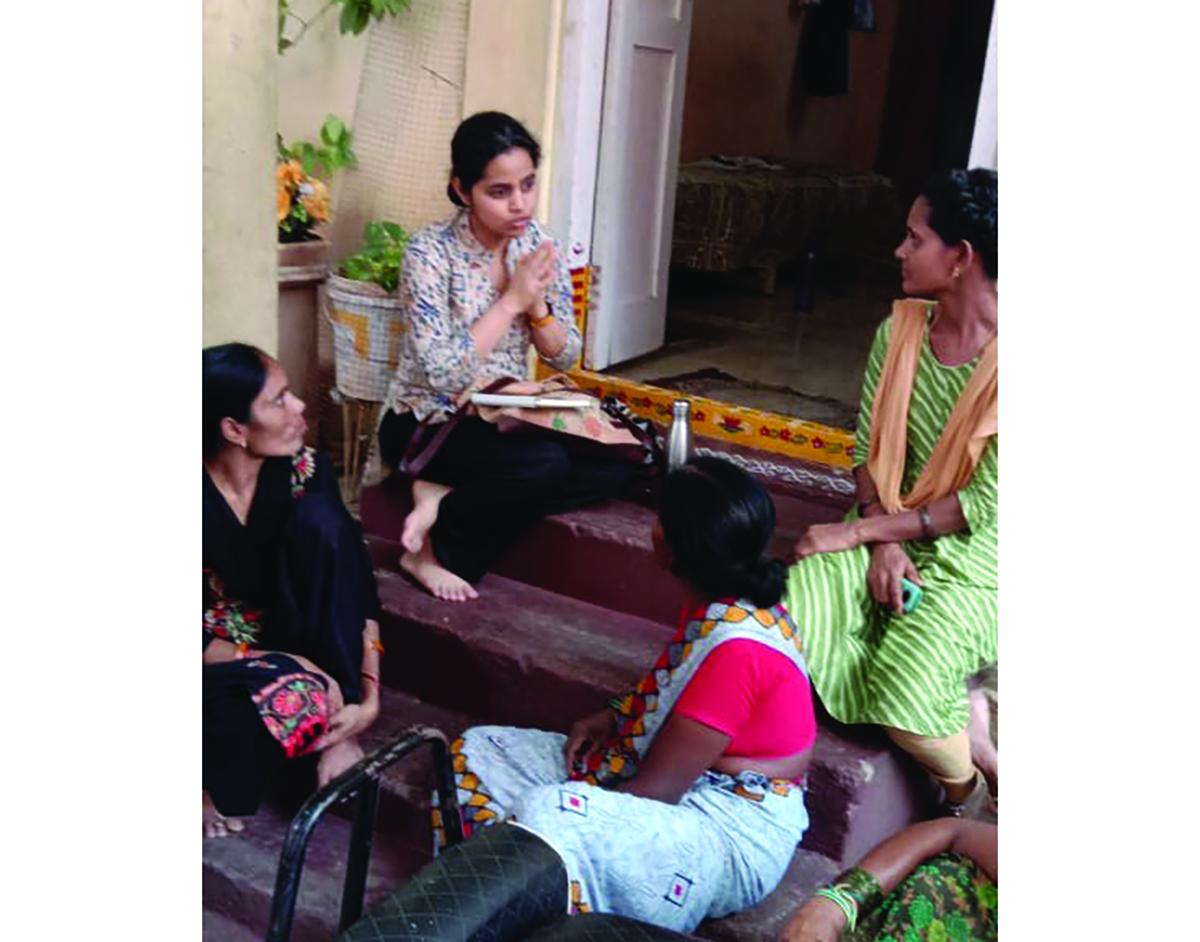
by Malvya Chintakindi, PhD Candidate, Department of Anthropology
At age 33, Renuka’s face carried the weathering of a life spent crossing multiple thresholds—between others’ homes and her own, between caste boundaries that marked her as both essential and polluting, between dreams of education and the harsh reality of survival.
“I used to be clear-skinned like you,” she told me, her fingers absently tracing the green glass bangles that matched her sari, a comment that deeply revealed the bodily inscription of caste and class through years of manual labor. Her eyes darted frequently toward the ceiling, measuring time until her husband’s return from his work as a computer operator. In this moment of quiet reflection, before domestic tensions would force her to hurry home, she unfolds a story that illuminates how caste, gender, and class interweave to shape lives in contemporary urban India: “We can have dreams,” she says, cutting through my question about her life aspirations, “but they won’t get fulfilled.”
The intersection of these dreams and their deferral plays out daily in the urban landscape of Hyderabad.1 Fifteen floors above the city streets, in the gleaming Cyber Towers that symbolize Hyderabad’s technological ascendance, Ramanamma and Saritha navigate different corridors of the same paradox. As cleaning staff from lower caste communities, they maintain the offices where “empowered women” work in positions of global influence.
“I am from here in this city,” Saritha reflects after twenty years of service, “but I have no security, no safety. I feel so far from where all these empowered women are.” Their physical proximity to spaces of progress serves paradoxically to heighten their sense of distance from it—a distance measured not just in meters but in the interlocking barriers of caste, gender, and class that keep them perpetually on the margins of urban opportunity.
My dissertation project examines how class, caste, and gender intersect in urban slums of India to shape aspirations for “good life” for women belonging to lower caste communities, predominantly engaged as informal labor. Last summer, as a CSWS research fellow, I conducted participatory research with middle-aged women that revealed a submission to precarious conditions and the strategic solutions they have developed to pivot the lives of their children. Given the ubiquity of caste, class, and gender creating a triple burden on lower caste women in India, this intergenerational capability transfer among such marginalized communities highlights how multiple vulnerabilities are reshaped into a source of resistance and opportunity.
Ramanamma and Saritha’s navigation of tech spaces informs their children’s understanding of both professional possibility and persistent barriers, while their maintenance of traditional caste practices at home creates preserved knowledge that enables both survival and dignity. Renuka’s emphasis on both practical skills (her daughter’s karate training) and formal education demonstrates skillful balancing of protective capabilities with expansive ones. These patterns suggest how marginalized communities actively construct strategic combinations of traditional and modern knowledge that enable both protection from vulnerability and expansion towards new possibilities.
Ramanamma and Saritha craft invisible cities within cities. Through “parallel urbanities,” they create worlds that exist alongside but separate from the dominant narratives of global capitalism, worlds where back entrances become front doors and service elevators carry not just bodies but dreams. Renuka orchestrates her sovereignty across multiple stages—her own cramped home, the offices she cleans, the careful choreography of movement between them. These aren’t simply spaces she occupies but domains she authors, each one requiring its own strategies of presence and absence. When she times her work to avoid her controlling husband while maintaining her employers’ trust, she isn’t just managing schedules but crafting temporal territories of freedom within constraint. I develop the concept of “generational capability transfer” to explain how abilities to convert resources into achievements are shaped by intergenerational experiences of both limitation and possibility.
Narratives such as these challenge us to understand how good life aspirations are shaped not just by present opportunities but by the complex interplay between historical consciousness and future orientation, between the weight of what was denied and the persistent reach to what might yet be possible. In these women’s careful cultivation of their own and their children’s capabilities, we see how hope itself becomes a kind of inheritance, one that carries both the memory of constraint and the seeds of its transcendence.
—Malvya Chintakindi received a 2024 CSWS Graduate Student Research Grant and the 2025 Jane Grant Dissertation Fellowship for this project.
Notes:
1 Hyderabad—a major technology hub in South India, in the state of Telangana, blending traditional and modern elements—offers an ideal research site for studying Dalit intersectionality due to its stark juxtapositions of technological aspiration and persistent caste hierarchies. The city’s significant budget allocations for Dalit empowerment programs, among the highest in India, create a critical research opportunity to examine how substantial state investment interacts with entrenched social hierarchies, illuminating the gap between policy intervention and lived experience.

